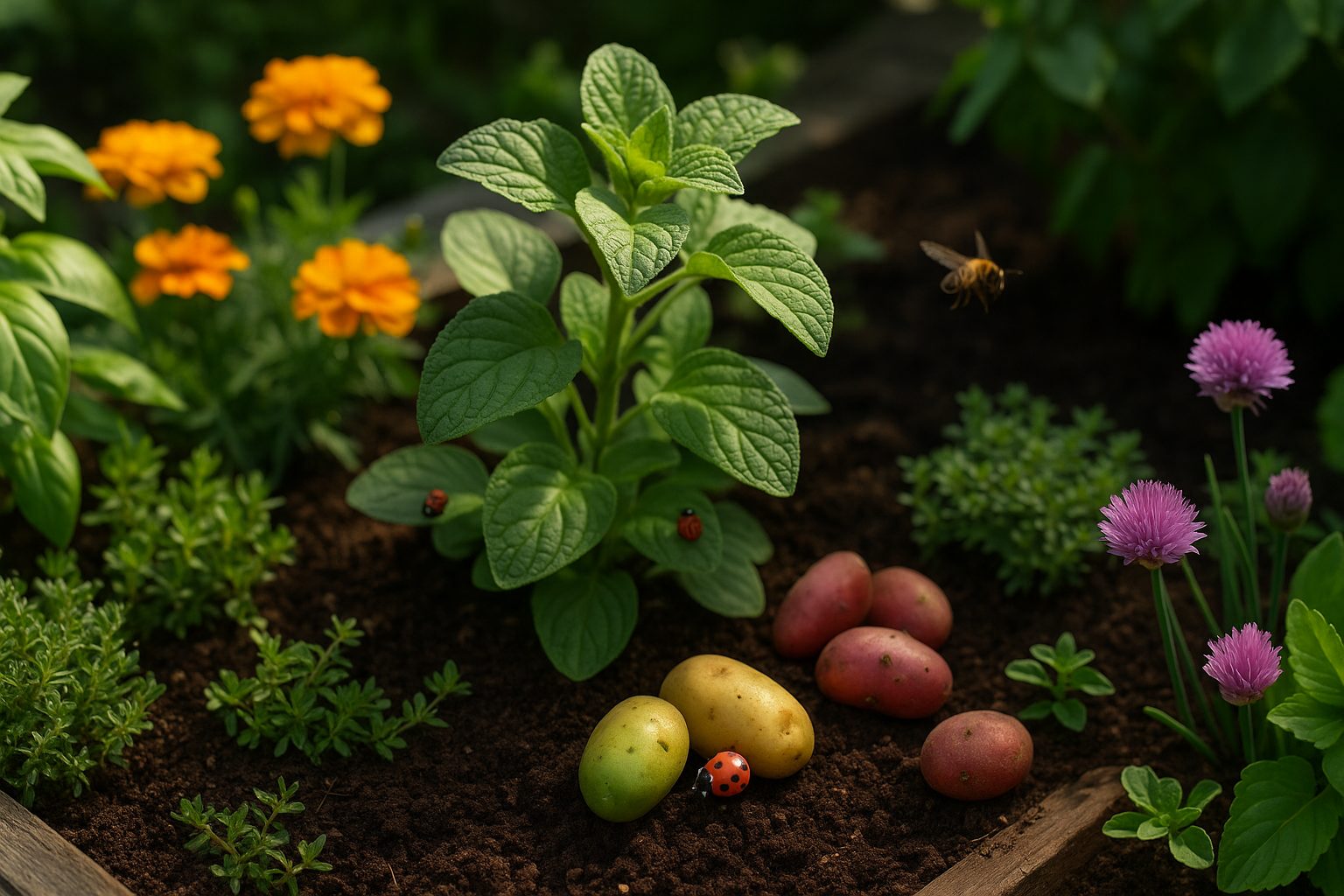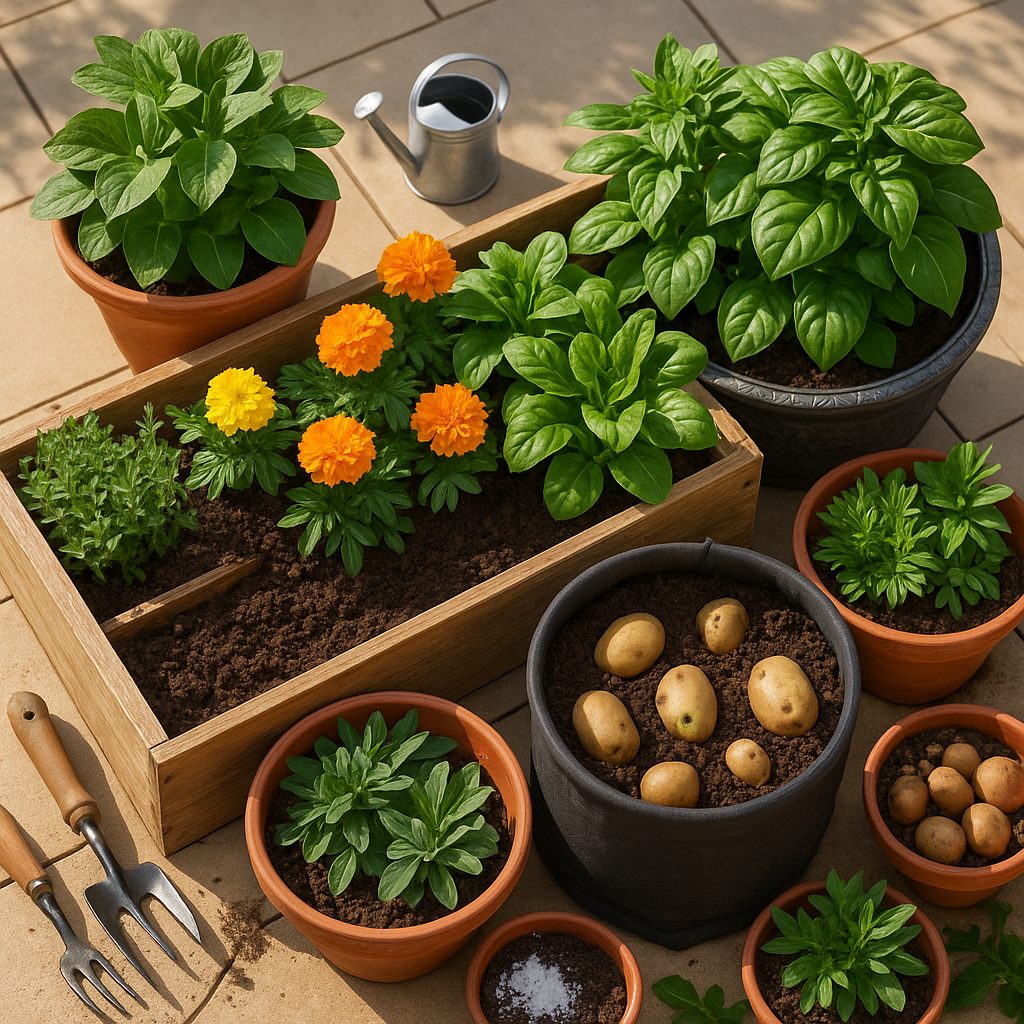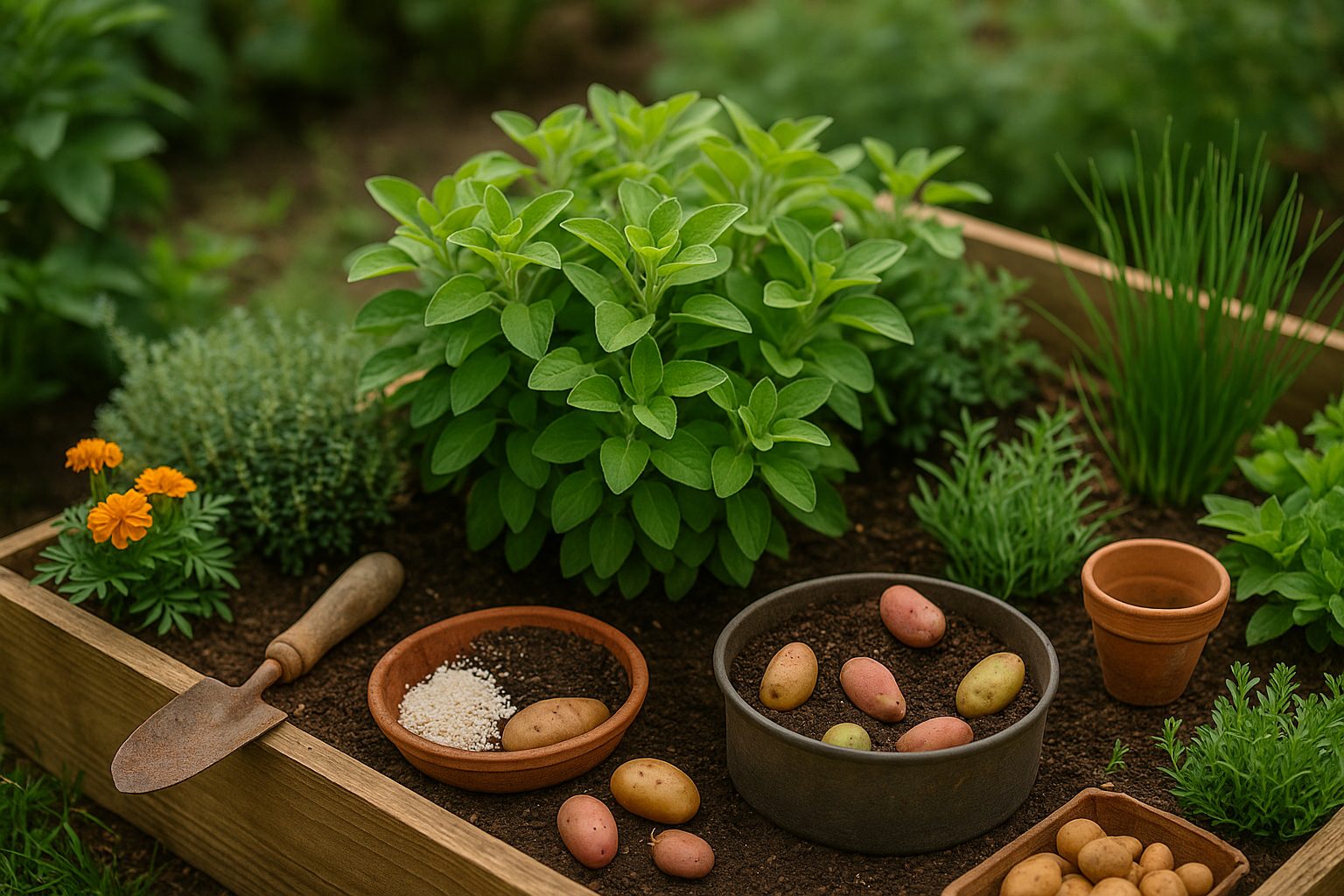Companion Plants for Mexican Oregano

When it comes to tackling Mexican oregano pests, companion planting can be one of your garden’s most effective—and natural—defense strategies. Beyond simply deterring unwanted insects, the right companion plants can boost Mexican oregano’s growth, increase resilience, and even intensify its flavors.
For example, basil is a standout partner. Not only does it repel aphids and mosquitoes, but it also enhances the essential oils in oregano leaves, resulting in a richer taste. Marigolds are another classic companion, famous for warding off nematodes and whiteflies with their unmistakable scent. Plus, their bright blooms attract pollinators and beneficial insects like ladybugs, which feed on pests.
Thyme, with its ground-covering growth habit and naturally pest-repellent oils, helps smother weeds and creates a physical barrier that confuses flying insects searching for oregano. Lastly, chives provide both pest protection—deterring aphids and Japanese beetles—and boost nearby plants’ disease resistance through their antifungal properties.
Integrating these companions leads to a healthier, more balanced garden ecosystem where Mexican oregano can thrive with fewer chemical interventions. Plus, the subtle mingling of herb aromas in your plot can result in more robust, flavorful harvests ready for your favorite recipes.
Plants to Avoid Near Mexican Oregano
When planning your herb garden, keep Mexican oregano away from plants like mint, basil, and traditional oregano. These herbs tend to be vigorous growers and may quickly overcrowd or overshadow Mexican oregano, competing for the same nutrients and moisture in the soil.
Mint, in particular, spreads aggressively through underground runners, often monopolizing space and nutrients, which can stunt the growth of less aggressive neighbors like Mexican oregano. Traditional oregano and basil also attract similar pests, such as aphids and spider mites, increasing the risk of infestations spreading among closely spaced plants.
To maximize Mexican oregano’s health, always give it its own section or container, leaving at least 18 to 24 inches of space between it and other large herbs. If you must plant near potential competitors, consider installing physical barriers (like buried pots or edging) to discourage root encroachment. Rotating garden beds each season or using raised planters can also minimize pest buildup.
By thoughtfully separating Mexican oregano from these particular companions, you give it the best chance to flourish without ongoing battles for survival in your herb garden.
Common Pests Affecting Mexican Oregano
Mexican oregano is a hardy herb, but like any plant, it can attract unwanted pests such as spider mites, aphids, mealybugs, scale insects, and fungus gnats. Each pest leaves telltale signs to watch for.
Identifying the Pests
- Spider mites: Tiny but create webbing on the undersides of leaves and cause a stippled, silvery appearance.
- Aphids: Cluster on tender shoots and stems, sucking sap and leaving leaves curled or sticky from honeydew.
- Mealybugs: Resemble tiny cotton balls hiding in leaf joints or roots, causing yellowing and weak growth.
- Scale insects: Appear as small, brown bumps on stems and leaves, weakening plants by draining sap, often leading to yellow spots or premature leaf drop.
- Fungus gnats: Most troublesome indoors; adults look like tiny flies hovering around soil while their larvae feed on roots, stunting growth and causing wilting.
Risk Factors by Environment
Outdoor Mexican oregano is at higher risk from pests like aphids and scale, especially in warm, humid regions where populations explode in spring and summer. Indoor plants, on the other hand, are particularly susceptible to spider mites and fungus gnats due to limited natural predators and higher humidity from watering.
Early Detection and Prevention
To spot infestations early, regularly inspect leaves—including undersides—for sticky residues, webbing, tiny insects, or unusual bumps. Quarantine new plants, keep the area clean, and avoid overwatering to discourage pests.
For example:
- Increasing air circulation outdoors helps deter aphids and spider mites.
- Using sticky traps or letting soil dry slightly between waterings minimizes fungus gnats indoors.
Staying vigilant and tailoring pest prevention strategies to your specific environment will help your Mexican oregano thrive year-round.
Natural & Preventative Pest Management Strategies
Keeping pests at bay in your garden starts with simple, everyday habits. Inspect your plants regularly—check under leaves and along stems for any unusual spots, holes, or insects before they become a bigger problem.
Healthy soil is your first line of defense, so use quality compost and rotate your crops each season to prevent pests from settling in. Water wisely; overwatering invites pests like fungus gnats, while underwatered plants become weak and susceptible to attacks.
When you spot pests, tackle them early with organic methods:
- Manually remove larger bugs or egg clusters by hand or with a gentle water spray.
- Try natural solutions like neem oil, diluted dish soap sprays, or garlic-infused water to deter common invaders like aphids and spider mites—always test a small portion of the plant first.
- Invite helpful predators such as ladybugs or lacewings into your garden by planting pollen-rich flowers nearby.
If an infestation escalates and these methods aren’t enough, consider stronger treatments like horticultural oils or approved organic insecticides. Apply them when pollinators aren’t active (usually early morning or late evening) to minimize harm.
Always follow label instructions closely, and use any chemicals sparingly to protect beneficial insects and the ecosystem around your plants. Consistency is key—routine care and timely interventions make all the difference in maintaining a healthy, pest-resistant garden.
Designing a Visually Appealing and Productive Oregano Garden

Incorporating Mexican oregano into your garden is both practical and visually rewarding. Start by placing oregano near the front or edges of raised beds or containers, where its airy, upright stems can cascade gracefully.
Mix it with herbs like thyme and sage, which share similar sunlight and watering needs. These combinations not only look lush together but also help repel garden pests naturally, thanks to their aromatic oils.
For an extra pop of color and pollinator appeal, interplant Mexican oregano with marigolds or calendula—flowers known for boosting pest resistance and creating cheerful, eye-catching beds.
Place taller herbs, such as rosemary, behind oregano to create a layered effect that maximizes light exposure and airflow for all plants, reducing the risk of mildew.
In containers, try clustering Mexican oregano with culinary companions like basil and chives for a handy “kitchen garden” that thrives on sunny patios.
Just remember to avoid overcrowding: give each plant enough space to breathe, typically 12-18 inches, to promote strong growth and minimize disease.
By thoughtfully blending oregano with compatible herbs and vibrant flowers, you’ll cultivate a productive, resilient garden that’s as beautiful as it is useful.
